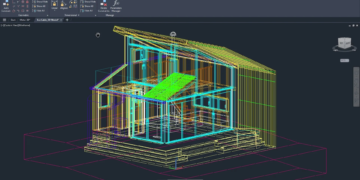Managing capital expenditures (CapEx) can be challenging for any organization, especially when it comes to ensuring proper approvals and budget control. A well-structured CapEx approval process ensures that large investments are properly evaluated, authorized, and tracked. However, when this process is handled manually, it often leads to delays, errors, and missed opportunities. By combining a streamlined CapEx approval process with purchase requisition automation, businesses can make faster, more accurate investment decisions while reducing administrative work.
Understanding the CapEx Approval Process
Capital expenditures are significant investments in assets such as new equipment, technology systems, or building renovations. The CapEx approval process is a structured workflow that ensures these investments align with the company’s strategic and financial goals.
Typically, the process involves:
- Submitting a CapEx request with detailed justifications.
- Reviewing the request by department heads or finance teams.
- Evaluating return on investment (ROI) and budget feasibility.
- Approving or rejecting the request based on business priorities.
Without a clear process, organizations risk overspending, approving unnecessary purchases, or delaying critical investments.
Challenges in Manual CapEx Approval
Manual approval processes often involve multiple spreadsheets, email threads, and paper forms. This creates several problems:
- Delays in Decision-Making – Approvals may take days or weeks due to back-and-forth communications.
- Lack of Transparency – It can be difficult to track the status of a request and see who is responsible for approval.
- Errors in Documentation – Missing details or incorrect data can lead to rework and delays.
- Limited Visibility – Without centralized records, analyzing past CapEx spending is time-consuming.
How Purchase Requisition Automation Improves CapEx Approvals
Purchase requisition automation replaces manual forms and emails with a digital workflow, ensuring that every request follows a standardized process. When integrated with the CapEx approval process, it delivers several benefits:
1. Faster Approvals
Automated workflows route requests instantly to the right approvers. Approvers can review and approve from any device, reducing bottlenecks.
2. Improved Accuracy
Forms can be designed to capture all necessary details, preventing incomplete or incorrect submissions.
3. Better Compliance
Automation enforces company policies by ensuring approvals are based on set thresholds and budget limits.
4. Enhanced Visibility
A centralized dashboard lets stakeholders monitor the status of each request in real time.
5. Historical Insights
Digital records make it easier to review past investments and plan future budgets.
Key Steps to Automate the CapEx Approval Process with Purchase Requisition Tools
- Define Approval Rules – Identify spending limits and who needs to approve at each level.
- Design Digital Forms – Include fields for project details, estimated costs, and ROI calculations.
- Set Automated Workflows – Use workflow automation software to route requests to the right people in sequence.
- Enable Notifications – Send alerts to approvers and requesters to keep things moving.
- Track and Analyze – Use reporting tools to review spending patterns and approval timelines.
Real-World Example
Imagine a manufacturing company planning to buy a new production machine worth $250,000. In a manual setup, the requester would fill out a paper form, email it to a manager, and wait days for feedback. With automation, the process changes dramatically:
- The requester fills out a digital purchase requisition form with cost breakdown and ROI.
- The system sends it instantly to the department head for review.
- Once approved, it moves to the finance director and then the CEO for final approval.
- Notifications keep everyone updated, and the request is approved in hours instead of weeks.
Benefits of Combining CapEx Approval and Purchase Requisition Automation
- Time Savings – Faster processing means investments are implemented sooner.
- Cost Control – Automated checks prevent overspending.
- Increased Accountability – Every approval is tracked and recorded.
- Better Decision-Making – Real-time data supports strategic investment choices.
- Scalability – The process can handle multiple requests without overwhelming staff.
Conclusion
An efficient CapEx approval process is essential for making informed investment decisions and ensuring financial discipline. By integrating purchase requisition automation, organizations can reduce delays, eliminate errors, and improve visibility. The result is a faster, more transparent, and more reliable approval system that supports business growth.
When companies move from paper-based approvals to digital workflows, they not only save time and money but also empower decision-makers with the information they need—when they need it. The combination of CapEx approval and purchase requisition automation is a smart step toward building a more efficient and future-ready organization.













